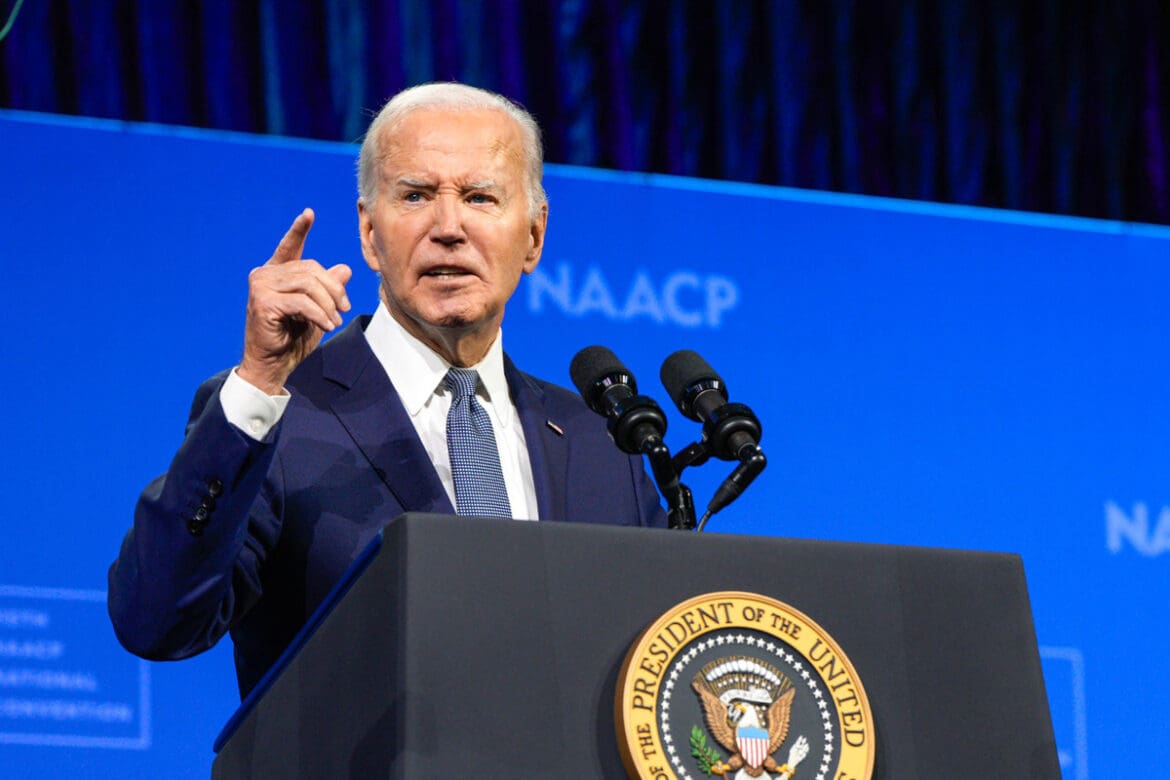In March, President Biden approved a highly classified strategic nuclear plan for the United States that for the first time directs American deterrence strategy toward China’s rapidly growing nuclear arsenal. The move comes as the Pentagon predicts that China’s nuclear stockpile could match the size and diversity of the U.S. and Russian arsenals within the next decade – The New York Times.
The White House has not made any official statements about Biden’s approval of the updated strategy, known as the Nuclear Posture Review. This document also envisages preparing the United States for possible coordinated nuclear threats from China, Russia, and North Korea. The document is updated approximately every four years and is so secret that it exists only in hard copies distributed to a limited number of senior national security officials and Pentagon commanders.
However, in recent speeches, two senior administration officials briefly mentioned these changes, ahead of a more detailed, unclassified report to Congress that is scheduled to be delivered before the end of Biden’s term.
Earlier this month, Vipin Narang, a nuclear strategist at MIT who worked at the Pentagon, said the president recently issued updated guidance on the use of nuclear weapons, taking into account several nuclear-armed adversaries. Particular attention was paid to the significant increase in the size and diversity of China’s nuclear arsenal.
In June, Pranay Waddy, the National Security Council’s senior director for arms control and nonproliferation, also mentioned this document, which for the first time analyzes in detail whether the United States is prepared to respond to nuclear crises that could occur simultaneously or sequentially using a combination of nuclear and non-nuclear weapons.
The new strategy, according to Waddy, emphasizes the need to simultaneously contain Russia, China, and North Korea.
Previously, the possibility that U.S. adversaries could coordinate nuclear threats to surpass the U.S. nuclear arsenal seemed unlikely. However, the new partnership between Russia and China, as well as the supply of conventional weapons by North Korea and Iran to Russia for the war in Ukraine, have radically changed Washington’s position.
Already, Russia and China are conducting joint military exercises, and intelligence is trying to find out whether Russia is helping North Korea and Iran develop missile programs in exchange for support.
This new document underscores that the next US president, who will be sworn in on January 20, will face a dramatically changed and much more volatile nuclear situation than the one three years ago. Russian President Putin has repeatedly threatened to use nuclear weapons against Ukraine, including during the crisis in October 2022, when Biden and his aides, studying intercepted conversations between Russian commanders, feared that the probability of using nuclear weapons could rise to 50% or even higher.
Biden, along with the leaders of Germany and the United Kingdom, forced China and India to make public statements that nuclear weapons should not be used in Ukraine, which temporarily eased tensions.
“It was an important moment,” said Richard N. Haass, a former senior State Department and National Security Council official under several Republican presidents and a former president emeritus of the Council on Foreign Relations. “We are facing a radicalized Russia; the assumption that nuclear weapons will not be used in conventional conflict is no longer credible.”
The second important shift is caused by China’s nuclear ambitions. The country’s nuclear growth is even faster than U.S. intelligence agencies predicted two years ago, fueled by President Xi Jinping’s determination to move away from the longstanding strategy of “minimal deterrence” in favor of matching or exceeding the size of the U.S. and Russian arsenals. Today, China’s nuclear complex is the fastest growing in the world.
While former President Donald Trump confidently predicted that North Korean leader Kim Jong Un would give up his nuclear weapons after their three face-to-face meetings, the opposite has happened. Kim has redoubled his efforts and is now estimated to have more than 60 nuclear weapons and the fuel to build more.
This expansion has changed the nature of the threat from North Korea: when the country had only a few weapons, it could be deterred by missile defense systems. However, its arsenal is now rapidly approaching the size of Pakistan’s and Israel’s arsenals, which in theory allows Pyongyang to coordinate nuclear threats with Moscow and Beijing.
U.S. officials say the new nuclear situation will inevitably change U.S. plans and strategy. As Vipin Narang said when he left the Pentagon: “We have to see the world as it is, not as we would like it to be. Perhaps in time we will look back on the quarter century since the Cold War as a break in the nuclear threat.” According to him, the new challenge is “the real possibility of cooperation and even collusion between our nuclear-armed adversaries.”
Despite this, new challenges to the US nuclear strategy have not yet become a topic of discussion in the presidential campaign. President Biden, who has been a nuclear nonproliferation advocate for most of his political career, has not spoken publicly about how he would respond to the challenges posed by the growing nuclear capabilities of China and North Korea. Vice President Kamala Harris, who is the Democratic candidate, also did not address the issue.
At his last press conference in July, a few days before he announced that he would not run for a second term, Biden confirmed that he had adopted a policy of opposing a broader partnership between China and Russia. “Yes, I do, but I’m not ready to talk about the details publicly,” Biden said. He did not mention, nor was he asked, how this partnership affects U.S. nuclear strategy.
Since Harry Truman’s presidency, this strategy has been focused primarily on Russia’s nuclear arsenal. However, Biden’s new guidance shows how quickly this is changing. China was mentioned in the last nuclear guidance issued at the end of the Trump administration, but the extent of Xi Jinping’s ambitions was not yet fully understood.
Biden’s strategy sharpens the focus on Pentagon estimates that China’s nuclear arsenal could grow to 1,000 by 2030 and 1,500 by 2035, bringing it closer to the level of the US and Russian nuclear forces. Officials note that Beijing is already ahead of these projections, having begun loading nuclear missiles into new silos discovered by commercial satellites three years ago.
Another cause for concern is that China has suspended a short-lived dialog with the United States on improving nuclear security. In particular, they discussed the possibility of warnings about missile tests or the creation of hotlines to prevent the escalation of incidents to a nuclear conflict.
One such discussion between the two countries took place in late fall, shortly before Biden and Xi met in California, where they tried to restore bilateral relations. The joint statement mentioned these talks, but the Chinese side had already hinted that they were not interested in further discussions and announced earlier this summer that they were ending the talks. They attributed this to American arms sales to Taiwan, which had been going on long before the nuclear security talks began.
Mallory Stewart, Assistant Secretary of State for Arms Control, Deterrence, and Stability, noted that the Chinese government “actively discourages us from having conversations about risks.” Instead, Beijing, she said, “seems to be adopting Russia’s tactic, which is that until we resolve the tensions and challenges in our bilateral relationship, they choose not to continue our arms control, risk reduction, and nonproliferation conversations.”
Stewart emphasized that it is in China’s interest to “prevent the risks of miscalculations and misunderstandings.”




